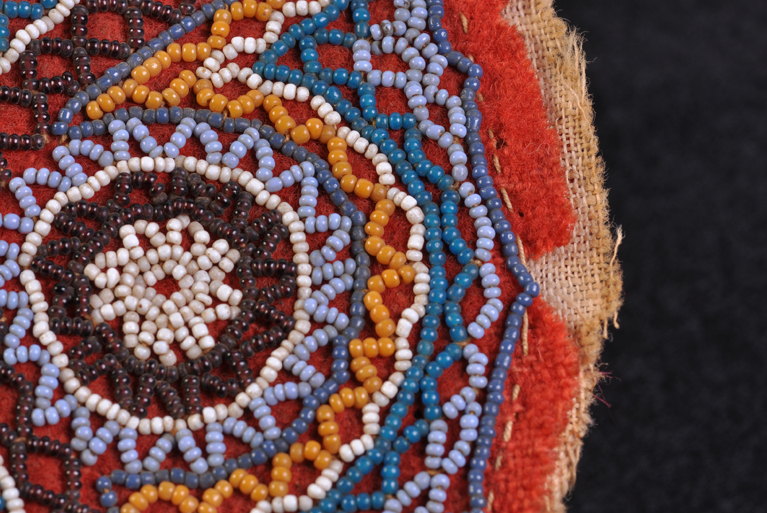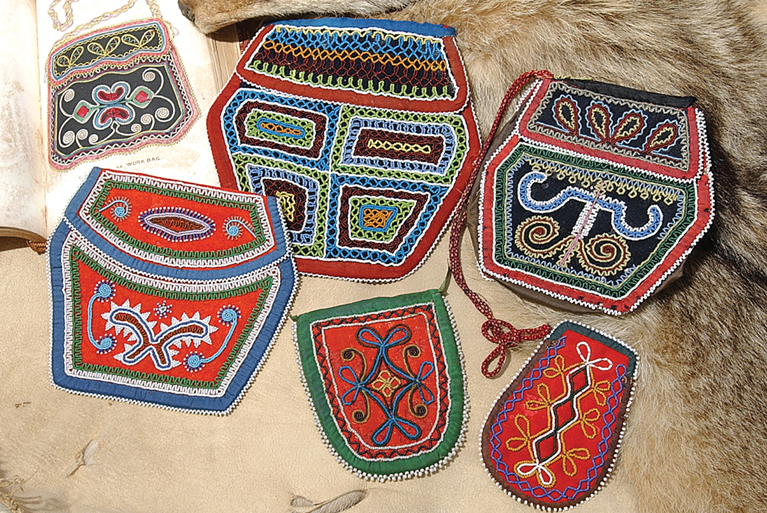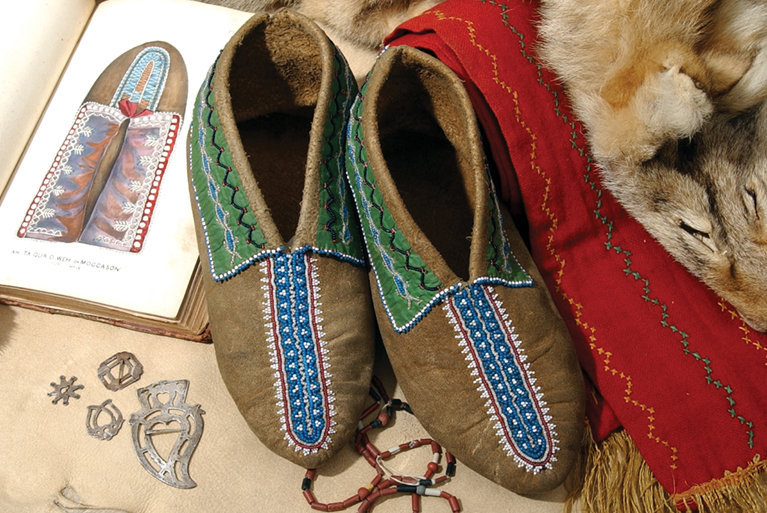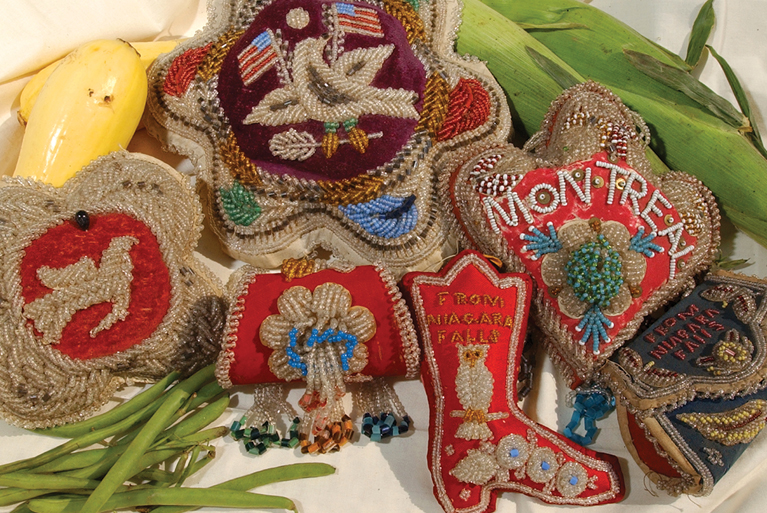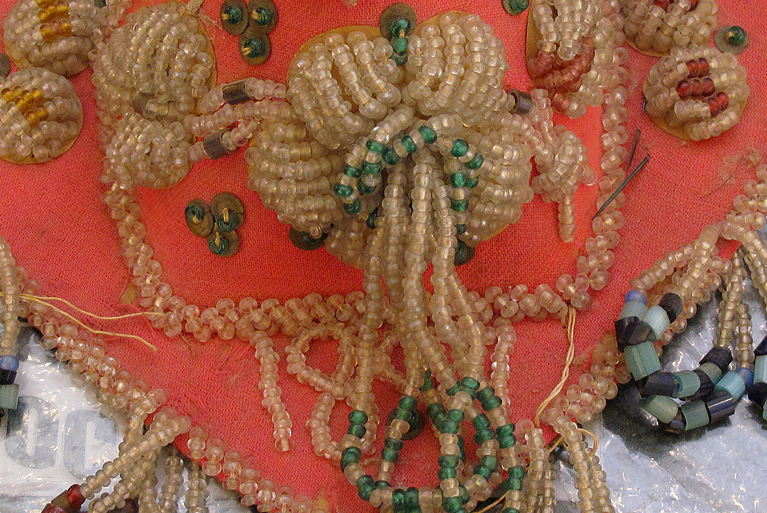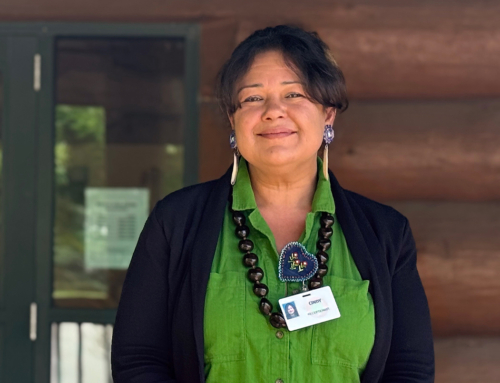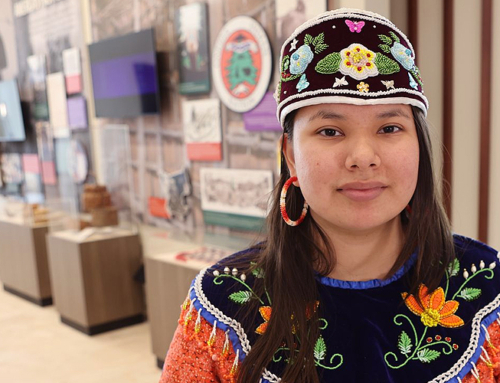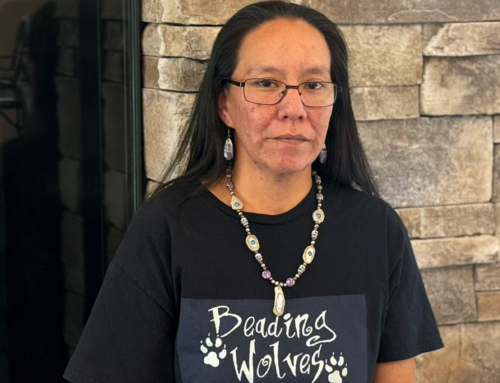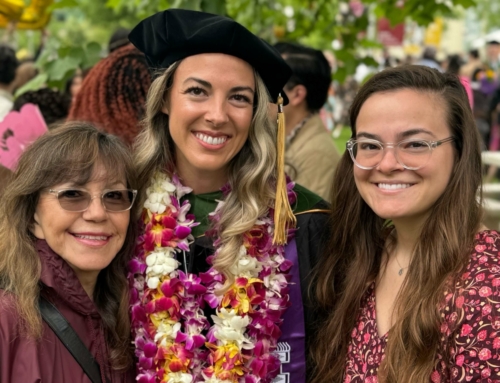Safely stored in the Nation’s archives are extraordinary items of Haudenosaunee beadwork, remarkable for their intricacy and colorful design. Originally created as souvenir items sold during the Victorian era, the Nation now owns one of the largest collections of Haudenosaunee beadwork in existence with more than 700 beautifully fashioned items.
The collection is indicative of Haudenosaunee artistry, using an ancient technique of built-up decorative surfaces in their work. Beaded work from the 1800s and early 1900s – moccasins, purses, pincushions and hats – are among the fanciful souvenir items now in the Nation’s cache. Some articles are emblazoned with the year and where they were sold, places that include Niagara Falls, Saratoga and Oneida Lake.
Beadwork as Survival Art
Beadwork was a survival art form that began when the Haudenosaunee were impoverished and struggling with devastating cultural loss. Each was the product of long work and each was imbued with sacred values. The initial purchasers of these items bought them for a pittance of their current market value that is expected to increase with time.
During the Victorian era in the 19th century, Niagara Falls was considered a romantic American destination for the English and one of the venues where the Haudenosaunee sold their beadwork. Also during this era, several exhibitions were held in England and American Indian beadwork was included, as Haudenosaunee beadwork was very popular.
Beaded items from the Haudenosaunee also reached Great Britain’s shores via American soldiers in World War II, who offered beaded pieces to their girlfriends. Later, in the 1950s and ‘60s, beaded work remained popular in England and was still affordable and available. But by the 1970s and ‘80s, fewer pieces were accessible and prices began to escalate.
Haudenosaunee regard bead working as a gift from the Creator to teach patience and humility. Such a gift should be used and shared. Often beadwork was carried on by women of different generations who talked, as they worked, of their community and its history. In such a setting, these beaded creations took on deep personal meanings. Stories, lovingly interwoven into every beaded flower, petal and stalk, told of what it meant to be Oneida and Haudenosaunee.
A nation should own and control its cultural history to tell its story, rather than having outsiders own and use this material to tell their version. By owning their past, a people are better prepared to shape their future. The Nation accepts the role of caretaker, and in effect culture bearer, for themselves, and by extension the Haudenosaunee as a whole, by preserving a material part of their culture, which reflects their self-image and how they will be perceived by others.


